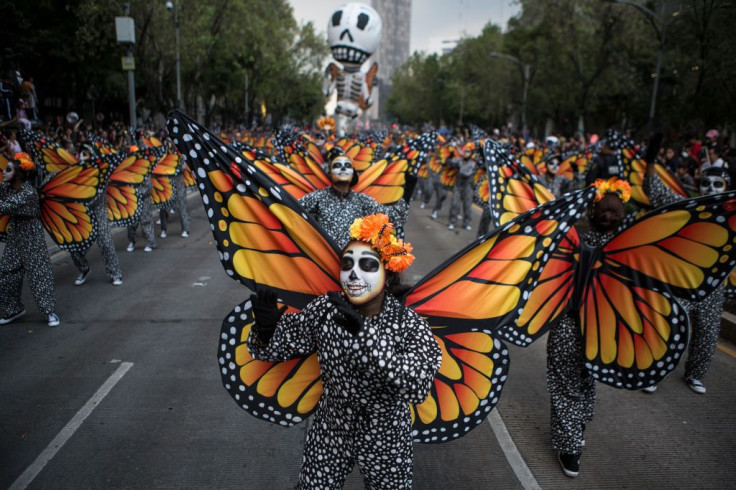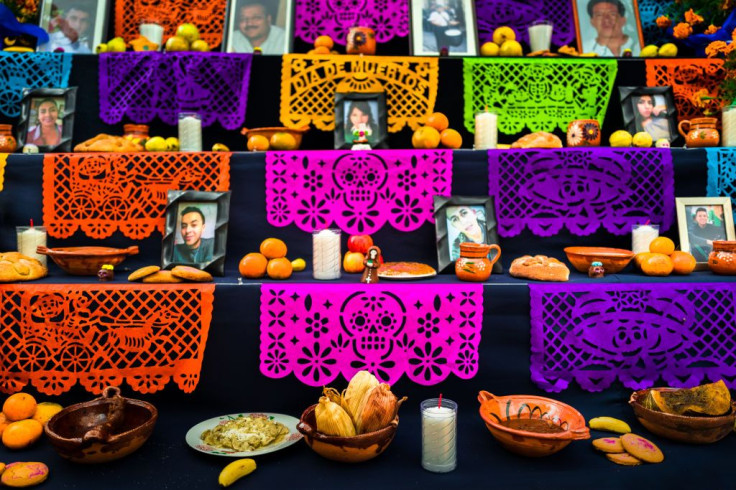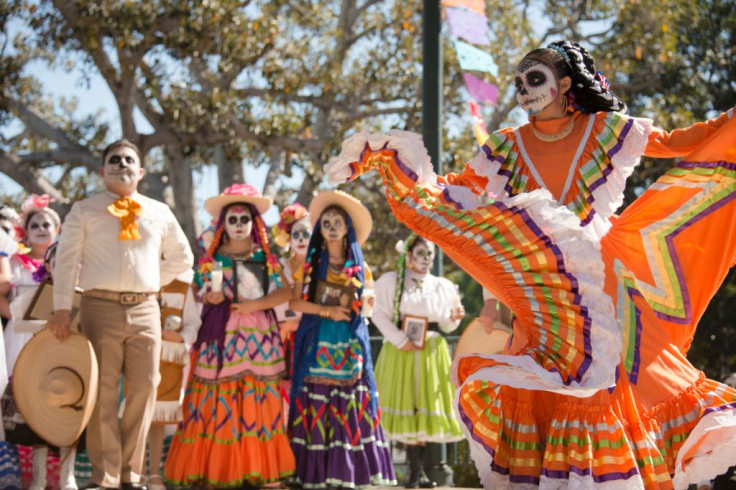Día de los Muertos, or Day of the Dead is a traditional Mexican Holiday celebrated on November 1 and 2, honoring the lives of departed loved ones. Although it starts at the end of October 31st, it is not the Mexican version of Halloween, but the 3000 year old tradition celebrating life, love and the lives of past ancestors. Many people celebrate by visiting the graves of deceased loved ones and setting up altars with lavish decorations, candles, flowers, photos and their favorite foods. We gathered a list of 5 important facts you should know about this holiday.
“Rather than something to be feared, death is enthusiastically embraced and fully acknowledged as a part of life.” - David J. Skal Death Makes a Holiday
1. Celebration began in Aztec Mayan & Toltec cultures

History of Day of the Dead:
The Celebration of Día de los Muertos originated in ancient Mesoamerica (Mexico and northern Central America). The ancient indignenous people of Mexico including Aztec, Maya, and Toltec have practiced rituals celebrating the lives of past ancestors for around 3,000 years. The celebration, now known as Day of the Dead, originally landed on the ninth month of the Aztec calendar and was observed for the entire month. After the arrival of the Spanish, this ritual of commemorating the dead was intertwined with two Spanish holidays: All Saints Day (Nov. 1) and All Souls Day (Nov. 2).
2. Día de los Inocentes

The Day of the Dead is observed on November 2nd each year. It follows on from All Hallows Eve on October 31st and The Day of the Children and All Saints Day on November 1st. The Day of the Little Angels is specifically dedicated to people who died as children. Mexican folklore embraces the Monarch Butterfly as the souls of children returning. The Day of the Dead celebration begins at the end of the annual monarch butterfly migration and the beginning of their arrival to butterfly sanctuaries.
3. Special Traditions

The main tradition for Day of the Dead sees families gather together to honor and remember their loved ones who are no longer with us. Day of the Dead is celebrated as a sacred and joyous occasion, offering goods to past loved ones and celebrating their lives. Altars may come in different shapes and sizes, but they all serve the same purpose, to show respect and to honor a late loved one. Plans for Day of the Dead are made throughout the year. Toys are offered to dead children and bottles of alcohol or jars of alote get offered to dead adults.
An ofrenda is a collection of offerings and decorative objects placed on a ritual display during Day of the Dead celebrations.”The quality and degree of ornamentation of the ofrendas depend on regional traditions, family and individual wealth, recent deaths, or the year’s harvest. On the ofrenda, the main objects are symbolic of life’s elements: water, wind, fire, and earth.”
At the cemetery families bring lavish decorations, candles, and flowers to grave sites. After the returning souls have been greeted at home, families bring picnics, tell stories, play music, and sing songs to remember the good times at the grave site.
4. Vibrant Celebration/ Elements

Most families decorate their loved ones’ graves with ofrendas, which often includes marigolds. It’s said that these specific flowers attract the souls of the dead to the offerings, and the bright petals and strong scent guides the souls from the cemetery to their family’s home.
The marigold is a delicate, yellow-orange flower that represents grief, but is also bright enough to guide the spirits of dead one's back home.
Calaveritas de azucar (sugar skulls) are left on the altars for children who have passed. Small sugar skull creations are made for children (Nov. 1), while the larger skulls represent adults celebrated November 2nd. The skulls are not used as morbid symbols, but are painted brightly and used in a more whimsical way to show youth.
Papel Picado (Cut paper banners) are a very important traditional element seen everywhere decorating altars and the marketplaces. The banners represent air - one of the elements, and comes from the Aztec tradition used to cut bark paper and decorate it as a gift for the Gods.
Monarch butterflies play an important role in Día de los Muertos because they are believed to hold the spirits of the departed.
La Catrina is one of the most recognizable figures of Day of the Dead, a towering female skeleton with vibrant make up and a flamboyant feathery hat. The Lady of Death worshipped by the Aztecs protected their departed loved ones, guiding them through their final stages of the life and death cycles. The La Catrina that we know today came to be in the early 1900s by controversial and political cartoonist José Guadalupe Posada.
5. Day of the Dead Around the World

There are a few Animated films that celebrate these family traditions and stories, while paying respect to Mexican culture.
"Dia de los Muertos" by Whoo Kazoo
"The book of Life" from Guillermo del Toro
and most recently Pixar's "Coco"
According to National Today, Day of The Dead is celebrated worldwide throughout the year.
China celebrates the Ghost Festival in August. This traditional Buddhist and Taoist festival is part of Ghost Month, during which spirits including deceased relatives come out of the lower realm.
Cambodia celebrates Pchum Ben, Ancestors Day, which usually falls in September. This religious occasion is when the gates of hell are said to open up and the souls walk among the living.
North and South Korea celebrate Chuseok, a harvest festival comparable to Thanksgiving. The “Autumn Eve” holiday is celebrated for three days straight usually in September or October, when Koreans visit graves of their ancestors to pay their respects.
Nepal celebrates Gaijatra, known as the “festival of cows” which is a celebration of death. Usually in August or September, the first day of the dark four nights according to the lunar Nepa. Its purpose is to help people accept death as a reality and to help ease the passing of those who have died. Each yearcows, or children dressed as cows, walk in a procession throughout towns.
To greet people on Day of the Dead you can say “Feliz Día de los Muertos” or “Happy Day of the Dead.”
Great watch: PBS Día de los Muertos: A History
© 2025 Latin Times. All rights reserved. Do not reproduce without permission.



